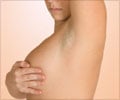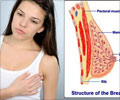A study of eating patterns across different countries justifies an association between breast cancer and diets heavy in animal fats--and proposes
A study of eating patterns across different countries justifies an association between breast cancer and diets heavy in animal fats--and proposes that sunlight exposure may be protective against the disease by elevating the body's vitamin D supply. However, the specific foods that might raise or lower breast cancer risk remain far from clear, according to a researcher at the American Cancer Society (ACS) in Atlanta, Georgia. What's more, he told Reuters Health, the only definite in terms of sun exposure is that too much of it can lead to skin cancer.
In the study, Dr. William B. Grant, an independent researcher from Newport News, Virginia, looked at dietary supply data for a number of countries in North and South America, Asia and Europe. Such data reflects only the supply of food in a given country, and not the food intakes of different people. Grant evaluated exposure to the sun's ultraviolet-B (UV-B) rays based on a country's latitude.According to his analysis, diets marked by a higher fraction of animal products such as meat are associated with a higher risk of breast cancer. Diets rich in vegetables, fruits, grains and fish, on the other hand, were correlated with a decreased breast cancer risk. The findings are published in the January 1st issue of the journal Cancer.
The results are not new, since studies have long noted a "striking pattern" between a country's overall fat intake and incidence of breast cancer, said Dr. Michael Thun, who heads epidemiology research at the ACS.
According to Grant, this association between fat intake and breast cancer may reflect the effect of diets high in animal-based foods and alcohol, and low in plant products and fish. However, Thun pointed out, studies designed to zero in on the dietary factors in breast cancer--such as those in which groups of women with and without breast cancer are compared--have often failed to find fat intake a risk factor.
Other research, he noted, is looking into dietary factors other than fat, such as the possible protective effect of the B vitamin folic acid, as well as whether exercise helps cut breast cancer risk. "The search for dietary factors continues," Thun said. As for the role of sunlight, Grant found an association between latitude and breast cancer suggesting that higher UV-B exposure was protective. UV-B rays spur the production of vitamin D in the body, and Grant speculates that the vitamin is behind the association he found in this study. Some research suggests vitamin D may help ward off cancer.
Thun noted that in the US, breast cancer rates are higher in the Northeast than in the Southwest, a pattern some suggest illustrates the role of sun exposure and vitamin D. But the possible effect of sunlight "has never been clear," he added. "What is clear is that ultraviolet light causes skin cancer," Thun said. And there are other sources of vitamin D, including fish and fortified milk. In fact, Grant notes in his report, during the winter in Europe, blood levels of vitamin D have been found to be higher in northern countries, where fish may be the main source of the vitamin.











